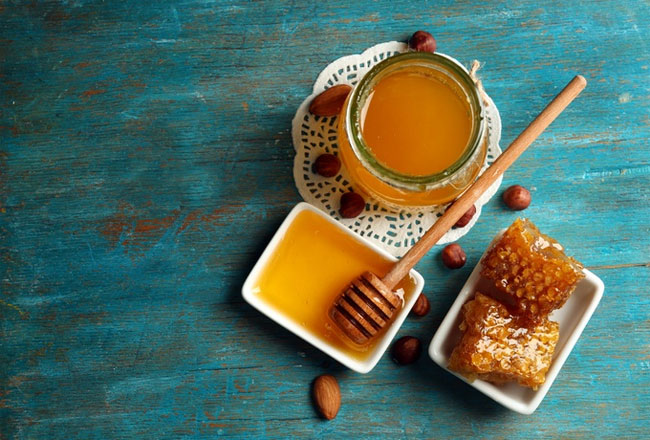Honey and sugar are commonly used in daily life, especially in cooking.
Since ancient times, honey has been valued for its nutritional benefits, medicinal properties, and beauty applications. Today, this product has become an essential ingredient in many households.
According to ScienceDirect, bees collect nectar and use enzymes to transform it into honey. They can fly up to 5 kilometers to find flowers. Each bee may visit between 100 to 1,500 flowers during a single trip to fill its stomach.
It is estimated that a bee colony must fly a total of 88,000 kilometers and visit around two million flowers to produce 500 grams of honey. On average, a bee colony can produce 55-91 kilograms of honey in a year. Farmers stimulate bees to produce excess honey in the hive so that it can be harvested without harming the colony.
There are many types of honey with diverse flavors, including polyfloral and monofloral varieties (such as coffee, rambutan, lychee, or longan). Other beneficial compounds found in this product include amino acids, antioxidants, vitamins, and minerals (iron, calcium, potassium, magnesium…).

Honey has many health benefits. (Image: Shutterstock – Tracybee).
Medical News Today states that honey is processed less than sugar, thus preserving its nutrients. Additionally, it serves as a natural remedy to soothe coughs, alleviate seasonal allergy symptoms, improve digestion, and heal ulcers and burns…
Sugar typically comes from sugarcane or fruits. Despite its natural origins, this ingredient undergoes several processing stages before becoming the final product. There are various types, including granulated sugar, rock sugar, fruit sugar, and malt sugar…
The price of sugar is quite low, making it easily accessible anywhere. It is also a staple ingredient in most households’ kitchens.

Sugar is a familiar ingredient in every Vietnamese household. (Image: Shutterstock – Tracybee).
Sugar and honey share many similarities and differences, according to Medical News Today. Both are carbohydrates, consisting of glucose and fructose. However, the ratio of these components varies among different types.
Specifically, sugar contains up to 50% glucose and 50% fructose, often referred to as “non-nutritive sweeteners.”
In contrast, honey contains 30% glucose and 40% fructose (this ratio can vary depending on the type of honey, but the highest carbohydrate content can reach up to 85%), with the remainder being water and trace minerals. These components are beneficial for health, including boosting immunity and providing antioxidant effects, according to Tandfonline.
Honey has a higher calorie content, with about 64 calories per tablespoon, while sugar contains 49 calories. Therefore, in smaller amounts, honey can provide a similar level of sweetness.
No research indicates that using honey is better than sugar, as excessive consumption of both products poses health risks. Users should consider appropriate quantities while choosing high-quality honey to ensure that it retains its nutritional value and biological properties.


















































